If you’re a scuba diver or underwater photographer, you may have heard whispers about micro coral bridges—those delicate natural coral causeways that emerge at low tide or during calm water, connecting islets or reef patches. These tiny coral ridges are barely visible from above, yet they offer a magical world for divers who swim through arches, over coral tongues, and across shifting sand channels. These structures are fragile; they disappear at high tide, are sensitive to wave action, and often go unnoticed except by those who explore beneath the waves.
In this article, we’ll take you deep (literally) into what micro coral bridges are, how they form, where some of them can be found, why they’re ecologically important, how to dive them safely, and how you can help protect these rare natural wonders. For lovers of coral architecture, shade, and underwater adventure, micro coral bridges are among the most enchanting discoveries.
What is a Micro Coral Bridge?
- Definition:
A micro coral bridge is a naturally formed coral ridge or arch that connects reef patches or coral islets when water is shallow. It may be exposed or near‐surface at low tide, forming a causeway you can walk across (if exposed), snorkel over, or swim through. At high tide or during swells, these ridges may be submerged, broken by waves, or hidden.
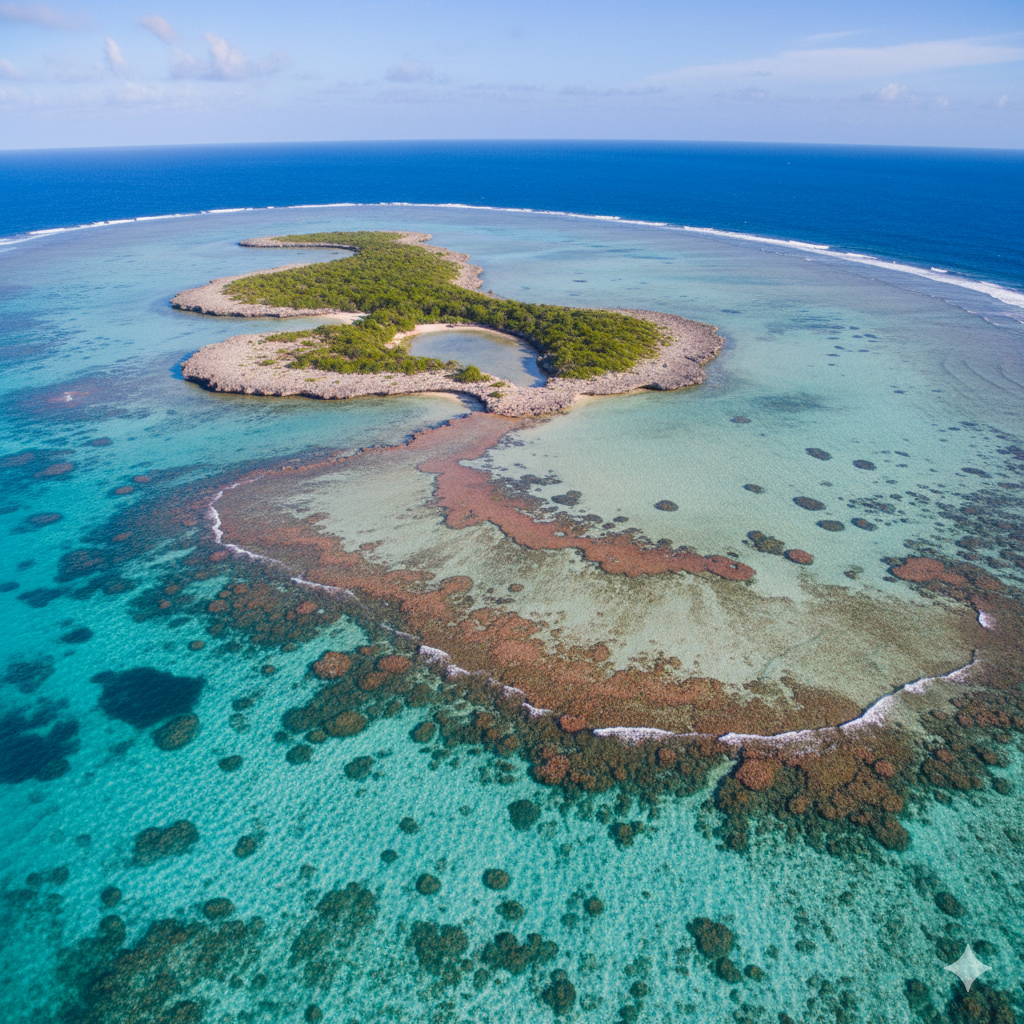
- Formation Process:
Coral growth over time (especially massive and branching corals) builds the ridge, combined with sand and rubble. Wave action, currents, and sediment deposition help shape and maintain them. They often form in tide‐sheltered coral reef edges, between reef flats and lagoons, or between reef islets. - Characteristics that distinguish them:
- Usually narrow (a few meters to maybe 10–20 meters wide)
- Low in height above sea level or just below waterline
- May vanish or be overwashed at high tide
- Highly sensitive to damage (by boat, wave, foot traffic, anchor drops)
- Biodiversity hotspots along edges: small fish, crustaceans, algae
Why Scuba Divers Love Them
- Underwater architecture: arches, swim-throughs, overhangs formed by coral ridges
- Good lighting during low tide or slack tide allows for dramatic photography
- Diversity of species: corals, sponges, juvenile reef fish, crustaceans hiding in nooks
- Unique sensory experience: feeling of crossing nature’s bridge, intimate reef scale
Locations of Micro Coral Bridges
(Note: Micro coral bridges are not well‐documented in scientific literature with that exact name; many are part of reef flats and causeways. Here are places where similar natural coral causeways or ridges occur.)
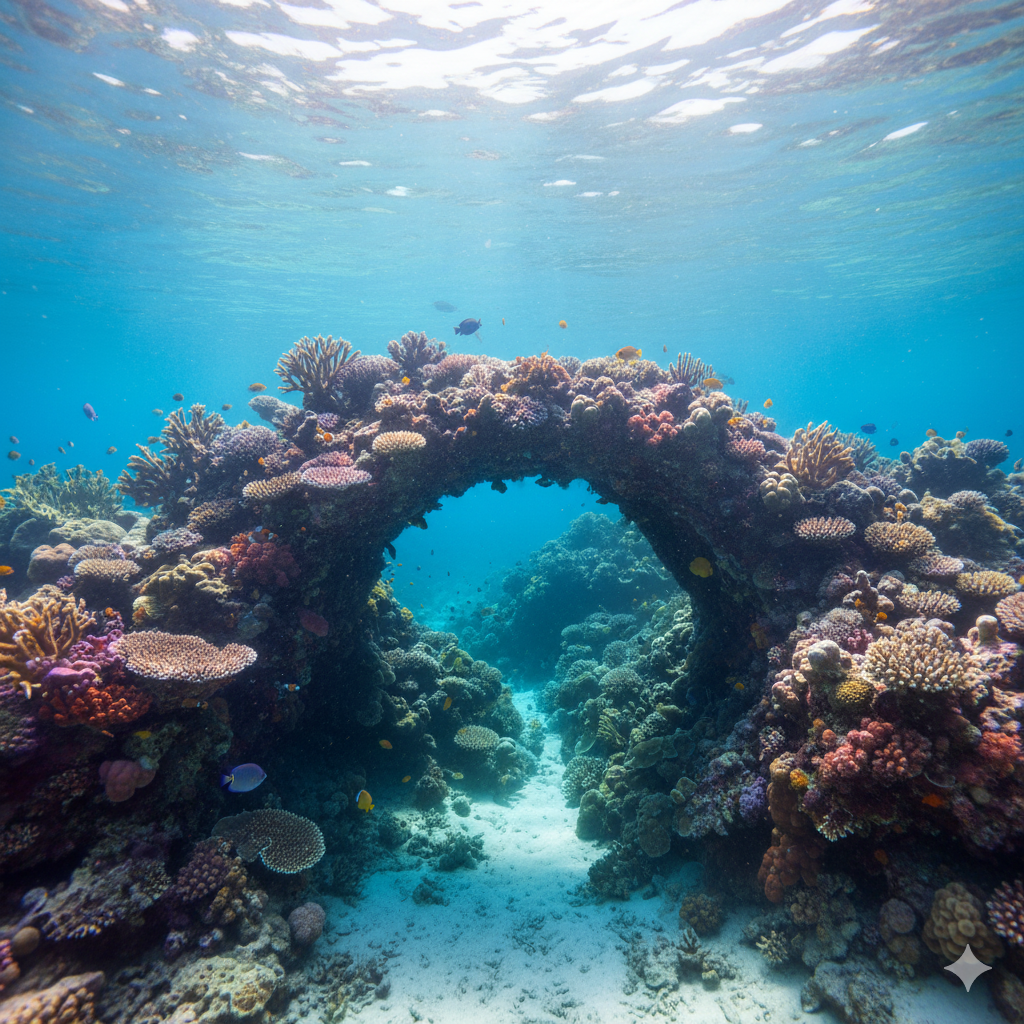
Okinawa, Japan
On some reef flats and small islands, coral ridges near reef edges act like causeways between islets during low tide. The Kaichu-Doro causeway is a man-made example, but natural ridges exist nearby.
Pacific Islands—Micronesia, Fiji, French Polynesia
Many small atolls have reef flats with coral ridges that connect motus (small islets) during low tide. Divers often find arches and coral ‘bridges’ near lagoon mouths.
Southeast Asia—Indonesia, Philippines
Reef flats around islands like Palawan, Sulawesi, and parts of the Coral Triangle sometimes have natural causeway ridges that become exposed or shallow at low tide.
Caribbean Reefs
In areas with barrier reefs, reef flats and patch reefs may produce ridges or elongated coral heads that act like bridges connecting reef flats or banks.
Best Time to Dive Micro Coral Bridges
- Low tide / slack tide to see ridges, get walkable or near-surface depth
- Calm seas; low wave action for safety and better visibility
- Dry season in tropical regions to avoid heavy runoff and turbidity
- Full-moon or new moon periods can have stronger tidal swings—helpful for exposure
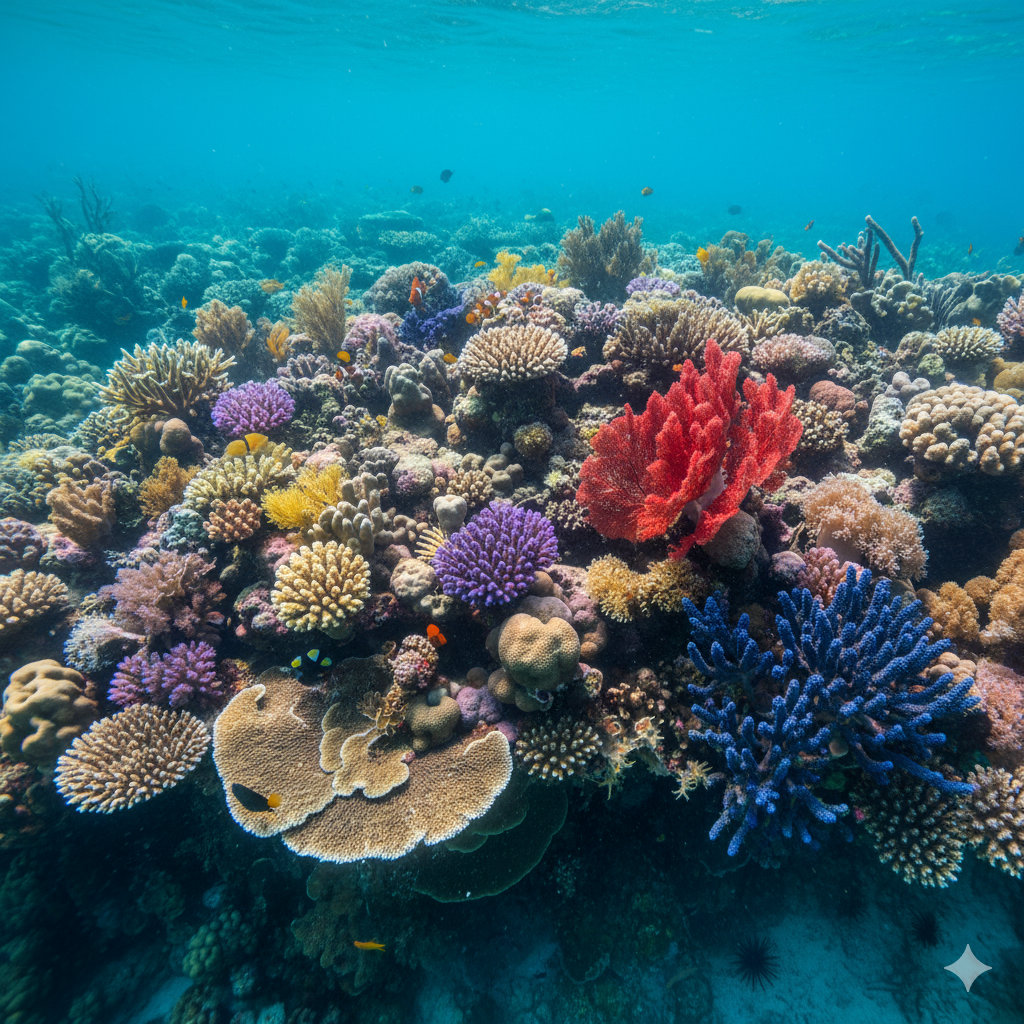
How to Dive/Explore Them Safely
- Use reef-safe sunscreen; avoid touching coral or walking on exposed ridges (very fragile)
- Use good buoyancy control to avoid drift over coral edges
- Dive with local guide who knows creek channels to avoid unexpected drop-offs
- Avoid visiting during storm season to reduce risk of damage and ensure diver safety
- Use proper dive gear: emphasize gloves, coral protection, underwater lighting
Ecological Importance
- Micro coral bridges support fish nursery habitats around their edges
- Provide natural barriers against waves/sediment intrusion
- Help connect reef patches, aiding larval dispersal
- When healthy, increase resilience of reef systems to environmental stress
Threats & Conservation
- Anchors, foot traffic, standing on bridges can crush coral
- Pollution & sediment runoff smother coral
- Ocean acidification, warming, bleaching weaken structure
- Unregulated tourism and boat navigation
Much like the Mysterious Drought Revealed Sunken Towns micro coral bridges appear and vanish
Conservation practices: Marine Protected Areas (MPAs), dive education, restricted access, no anchoring zones, monitoring of coral health
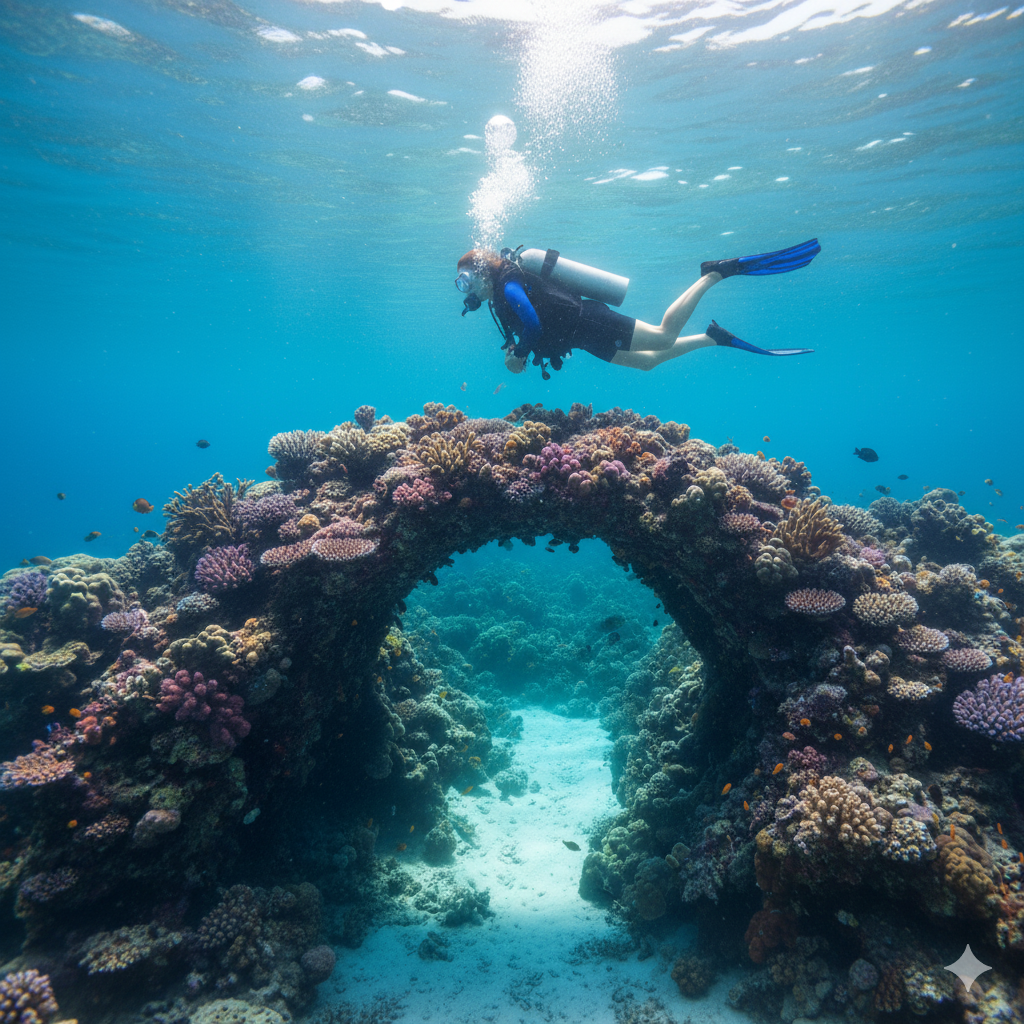
Sample Dive Itinerary Featuring Micro Coral Bridges
A 4-day dive trip in a tropical coral reef region (e.g., Philippines, Micronesia, Indonesia) that includes micro coral bridge exploration:
| Day | Morning | Afternoon | Evening |
|---|---|---|---|
| 1 | Arrival, check dive gear, snorkel reef flat to locate ridge | Dive reef slope | Sunset on ridge, light dinner |
| 2 | Dive micro coral bridge location (low tide) | Explore adjacent patch reefs | Underwater photography workshop |
| 3 | Visit second bridge / causeway site | Relax, beach walk, snorkel lagoon | Discuss reef ecology with local guide |
| 4 | Dive early, depart, feedback & conservation donation | — | — |
FAQs
Q1: What exactly qualifies as a micro coral bridge?
A micro coral bridge is a naturally formed ridge or arch of coral (sometimes with associated rubble or sand) that connects two reef patches, islets, or reef flats, usually accessible or visible at low tide or shallow water, and disappears or is submerged during high tide or strong wave action.
Q2: Are micro coral bridges common?
They’re not extremely well documented by name, but coral ridges, reef flats, and intertidal reef bridges are relatively common in reef regions—especially in the Coral Triangle and Pacific atolls. Many are fragile and under-recognized.
Q3: Can you walk across them?
Only when exposed during very low tide, and even then with extreme caution. Coral is very fragile; walking can damage coral skeletons, disturb ecosystem, and lead to erosion or collapse.
Q4: When is the best time to see them?
Low tide or slack tide, in dry season (low flow / low runoff) when water clarity is high. Early morning can help with lighting and calmer water conditions.
Q5: How can divers find micro coral bridges?
By researching dive site maps, speaking with local dive shops, checking reef flat topography, using satellite imagery for shallow reef flats, and observing islets with shallow reef patches nearby. Local knowledge is key.
Q6: What conservation measures help protect micro coral bridges?
Marine Protected Areas, dive tourism guidelines (no anchor, no standing on coral), restricting boat passage, controlling runoff and sediment, coral restoration, raising awareness among divers and locals.
According to the NOAA Coral Reef Conservation Program coral ridges like micro coral bridges play a key role in connecting reef habitats.
Traveler Advise Micro Coral Bridges
Micro coral bridges are among the ocean’s most delicate and magical reef features—tiny causeways of living coral that connect reef patches and islets, vanish when seas rise, yet leave lasting impressions under water. For scuba divers, they offer rare swim-throughs, natural architecture, and biodiversity beyond the usual reef wall.
To experience them is to respect their fragility. Book with sustainable dive operators, avoid disturbing the coral, observe without touching, and support conservation. In doing so, you help ensure that these micro coral bridges remain alive and stunning for future divers and reef lovers.

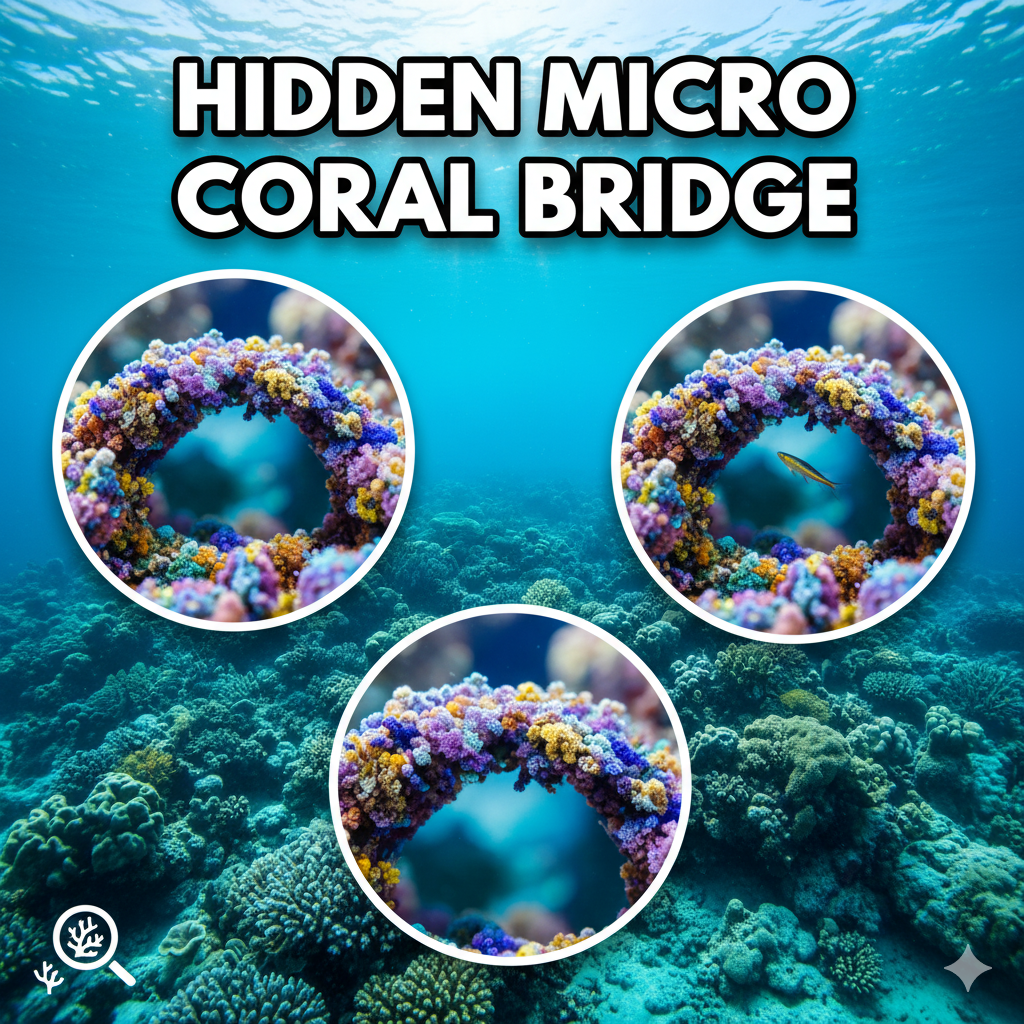


Pingback: 7 Waterfall Exclusive Rainbow Wonders to Discover